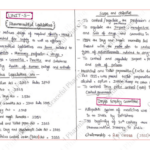Flocculation and deflocculation are two opposing processes that describe the behavior of suspended particles in a liquid.
Flocculation occurs when particles in a liquid attract each other and clump together, forming larger and larger aggregates. This process is often used to separate particles from a liquid and is commonly used in wastewater treatment plants. Flocculated particles are larger, stickier, and heavier, often settling to the bottom of a container due to their increased weight and gravity.
Deflocculation, on the other hand, occurs when particles repel each other and remain evenly distributed throughout a liquid. This process is often used to keep particles in solution or suspension and is commonly used in drilling fluids and ceramic manufacturing. Deflocculated particles are smaller, less sticky, and lighter, often remaining suspended in the liquid due to their decreased weight and gravity.
The difference between flocculated and deflocculated particles can be measured using a technique called zeta potential, which measures the electrical charge on particles in suspension. Flocculated particles have a high zeta potential, while deflocculated particles have a low zeta potential.
Overall, flocculation and deflocculation are important processes that impact the behavior of particles in liquids, and understanding their properties can help optimize a wide range of industrial processes.










